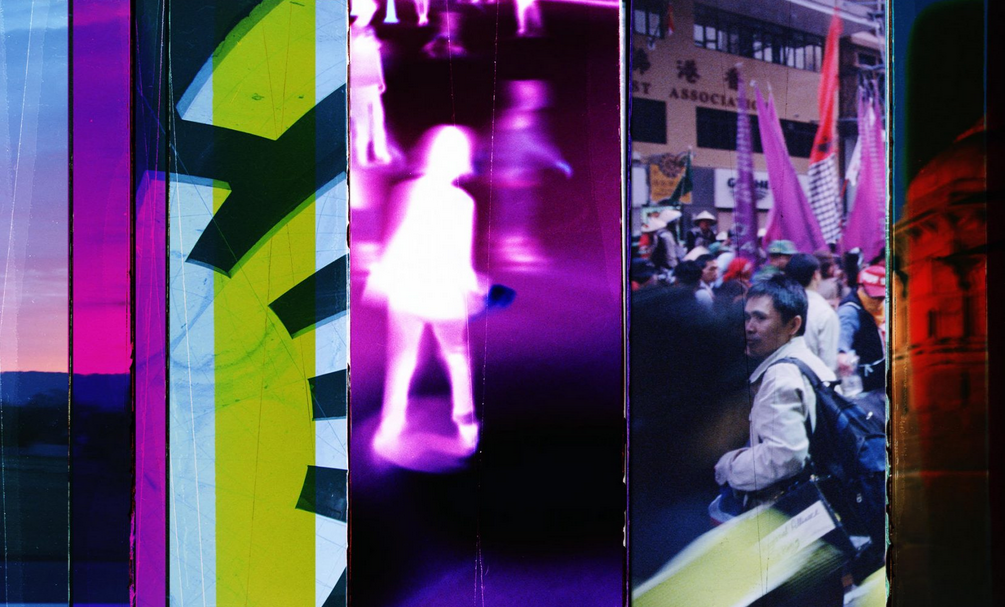My second year at this event, and a good opportunity to think again about the relationship between film and photography, common issues in both, and seek out ideas and work that help me to think through my own project.
Research as Creative Practice
The focus of the discussion was principally exploration of the extent to which non-fiction film making could be considered to be research, fuelled perhaps by the association of all three panel members with universities, and concerns around what counts for the Research Excellence Framework, and other measures of research productivity. Each panelist presented examples from their work, each of which had some resonance with my own. Brett Story’s The Hottest August is formed around casual conversation around New York during a heatwave, starting with the question ‘what are your hopes for the future’, creating a sense of the anxieties of people at this particular place and point in time. Whether or not this constitutes research, it does provide some insight, and uses visual (and audio) means to capture these encounters and engage and provoke the viewer. For me, it raises the question of the capability of photography to do capture everyday activity in this way. The method used is interesting as well – walking around with a camera and sound rig and asking the question to whoever you encounter, something that could certainly be done with still photography (though, interestingly, it might be more difficult to explain as an activity – the higher visibility of the video and audio rig giving a much clearer initial message about what is going on and what is expected of the participants; presumably permission are sought after the event). The idea of the production of an archive of the present, through these conversations with strangers, is interesting. A still image cannot do the same thing, but it can sit alongside other artefacts and media in a way that extended video cannot. This relates back to an earlier discussion provoked by Stephen Heath’s presentation at last year’s festival: the relative advantages of the installation over the film (in this case, his film Island). An enduring question, for those working in any media, is ‘who are you in this encounter?’
Bo Wang‘s Many Undulating Things explores spatial inequality in Hong Kong, starting and ending in a shopping centre, and exploring different kinds of public and private spaces (from housing projects to commercial warehouses). Interesting issues here include the difficulties in gaining access to privately owned land (and ways of subverting this) and the nature of the encounters with people (and rejections), leading in some cases to verbal interactions off-camera, but on sound track (interesting to explore with still images, with either text or audio). The primary focus of the film is on the experience of social and physical space, and the bodily experience of inhabited space, questions that are implicit in my work, but should perhaps be more explicit.
Interesting discussion, and resonates with my own approach to using photography as a means of investigation and interrogation (as research) rather than seeing research as just a precursor to visual work. How this might then contribute to inter-disciplinary research programmes remains a core question (which will be addressed again in future posts).
Masterclass: Mila Turajlic on Filming a Nation
https://www.othersideofeverything.com/
Raised interesting questions about the use of archives, and what happens when a country ceases to exist and archives are scattered. Also about the creating and maintaining spaces for dialogue (and the manner in which polarisation destroys this, constantly asking the question ‘whose side were you on?’). Who do you trust to tell the story of the past? On working in the archive ‘Every day in the archive is a shooting day for the Director’ (ie, creating content).
Films and shorts
I booked a session to view a selection of films and shorts, including the following (of particular relevance to my project).
Here for Life, Andrea Luka Zimmerman & Adrian Jackson, 2019
https://www.fugitiveimages.org.uk/projects/here-for-life-2019/
Collaborative film with ten Londoners, where individual stories blend one into the other. A number of scenes that provoke thoughts for my own project (i) posing in front of developer CGIs on hoardings; (ii) conversations between local people and site workers; (iii) darkened interiors, street scenes, court converted into a hotel; (iv) flickering between the poetic and the mundane; (v) acting on and in the world; (vi) privatisation of the land; (vii) sequestering of labour; (viii) juxtaposition of folk song and demonstrations; (ix) production of a community play. Most importantly, has provoked me to go back to earlier work by Zimmerman and Fugitive Images around Haggerston.
On the Border: Yoshiki Nishimura, 2018. Japan. 7’

Visually arresting photogrammetric rendering of beach debris with soundtrack.
E-ticket. Simon Liu. 2019. Hong Kong, UK. 13’

Cut up archive of 35mm film, 16k splices, spliced together in rigid increments. Good to think about in relation to the animations I have made from composites.
